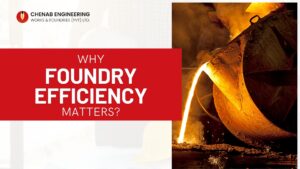The Future Of Manufacturing: Innovations In Laser Cutting Technology
How will laser-cutting technology shape the future of manufacturing?
Manufacturing is transforming thanks to laser cutting technology, which offers previously unattainable levels of precision, efficiency, and diversity.
Laser-cutting technology has revolutionized various industries including the manufacturing industry, offering accurate and effective solutions for cutting a variety of materials. Modern Industrial processes require precision, speed, and a wide range of laser cutting, which makes it a vital tool. With Ongoing advancements and improvements in laser cutting, the future looks promising for manufacturers seeking to increase output and quality. This article will discuss the most recent advancements in laser cutting and how they affect the manufacturing sector.
1. The Evolving Technology of Laser Cutting
Laser-cutting technology has evolved significantly over time, offering new opportunities in the manufacturing industry. The accuracy and speed of the cutting process have been completely transformed by the application of powerful lasers and complex computer-controlled systems. A versatile tool for many sectors, laser cutting may create complex three-dimensional shapes or simple two-dimensional cuts.
2. The Benefits Of Laser Cutting Advancements
The advancement and innovations in laser cutting offer various benefits to manufacturers. The following are some of the main benefits:
Enhanced Precision:
Laser-cutting technology enables complex and accurate cuts reducing material wastage and enhancing overall product quality.
Increased Efficiency:
Manufacturers can fulfill deadlines and reach larger production volumes because of the speed and accuracy of laser cutting.
Versatility:
Because of its flexibility, laser cutting can be used to process a wide range of materials, including composites, metals, plastics, and wood to meet a variety of production needs.
Cost-Effectiveness:
Laser cutting helps manufacturers, save money by reducing material waste and increasing cutting speeds, which increases profitability.
3. Future Innovations in Laser Cutting
Several interesting advances are expected to influence the direction of laser cutting in manufacturing as technology develops. Here are some significant advancements to watch out for:
Fiber Laser Technology:
Recently, fiber lasers have become more and more powerful because of their excellent quality and fast cutting speeds. The efficiency and power of fiber lasers are predicted to rise further with continued research and development, enabling producers to reach even higher standards of productivity and precision.
Robotics and Automation:
The manufacturing landscape is expected to change as automation and robotics are integrated with laser-cutting equipment. Processes will be streamlined, human error will be decreased, and significant cost savings will come from this combination. Fully Automated devices that can do intricate cutting jobs with little human interaction are what laser cutting will look like in the future.
Environmental Sustainability:
Improvements in laser cutting technology are aimed at lowering energy usage and trash production, making it more ecologically friendly. Manufacturers may support a greener and more sustainable manufacturing sector by employing effective laser systems and recycling and waste management techniques.
Smart Manufacturing Integration:
It is expected that laser cutting technology will be incorporated into smart manufacturing procedures, enabling smooth machine-to-system communication. Manufacturers may collect real-time data and maximize production efficiency by connecting laser cutting systems to the Internet of Things (IoT).
Hybrid Laser Cutting:
To get the best results, hybrid laser cutting combines the benefits of several laser technologies, including fiber and CO2 lasers. With the use of this approach, producers may meet unique cutting requirements by utilizing the qualities of each type of laser, such as flexibility and high power.
Improved Safety Features:
Enhancing safety features is becoming more and more important as laser-cutting technology advances. Innovations like sophisticated sensors, automated shut-off mechanisms, and protective enclosures are being created to reduce the possibility of mishaps and provide a secure working atmosphere for operators.
Conclusion:
With the developments and innovations in laser cutting technology, the industrial industry appears to have a bright future. These innovations, which range from exciting improvements like fiber laser technology, automation, and additive manufacturing to tube laser cutting guides, are completely changing the business. Improved accuracy, higher productivity, adaptability, and cost-effectiveness are advantages for manufacturers. By using laser-cutting solutions and keeping up with the latest trends, manufacturers can stay competitive in the always-changing manufacturing scene. With the development of laser cutting, embrace the future of manufacturing and open up new avenues for expansion and prosperity.





